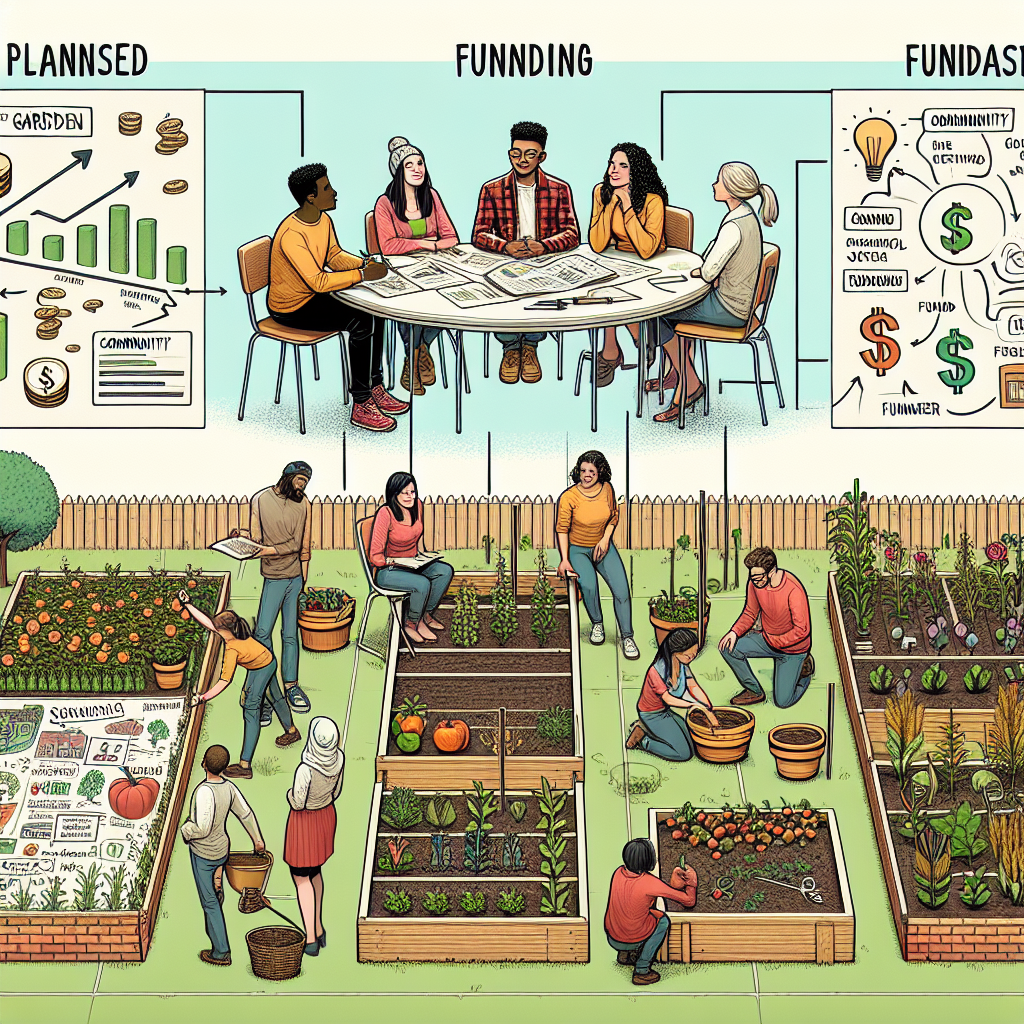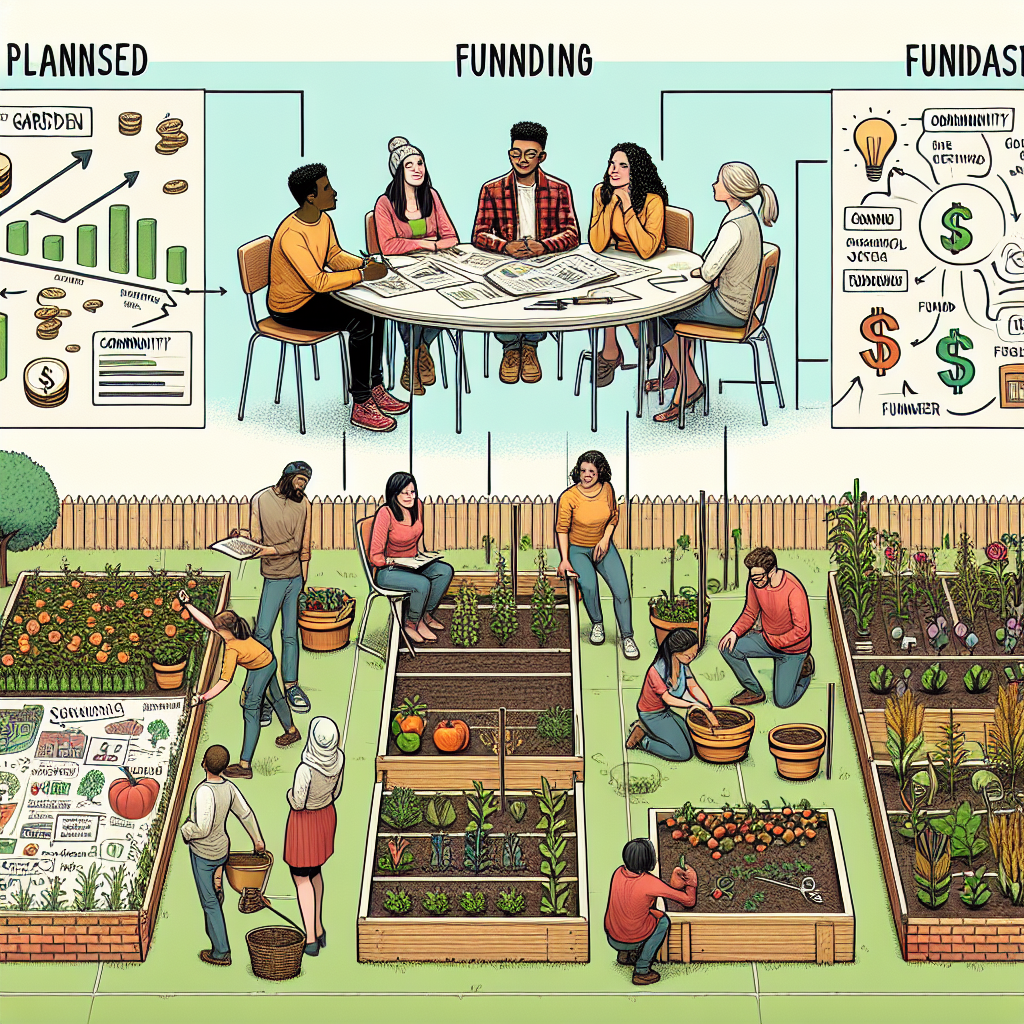Have you ever dreamed of turning an empty piece of land into a lush, vibrant garden that brings together your community? Look no further! In this step-by-step guide on how to start a community garden, we will walk you through the process of transforming a plot of land into a thriving green oasis where neighbors can come together, grow their own food, and foster a sense of togetherness. So grab your gardening gloves and get ready to make your community bloom!

Choosing a Location
When starting a community garden, the first step is to find an available space. Look for vacant lots, parks, or unused land in your community that can be transformed into a thriving garden. Assess the soil quality in the area to ensure it is suitable for gardening. Consider factors like sunlight and drainage, as plants require adequate sun exposure and proper drainage to thrive. Additionally, check local regulations and permissions to ensure you comply with any zoning or property laws that may affect your garden project.
Gaining Support and Organizing
Building a strong foundation for your community garden involves gaining support and organizing the efforts. Start by raising awareness in the community about the benefits of a community garden. Share information with neighbors, friends, and local organizations to get people interested in the project. To effectively manage the garden, form a planning committee that includes individuals with various skills and expertise. Define roles and responsibilities within the committee to ensure smooth operation and distribution of tasks.
Creating a Garden Proposal
To formalize your community garden project, create a comprehensive garden proposal. Outline the garden’s purpose and goals, explaining how it will benefit the community and address specific needs. Develop a budget and fundraising plan to ensure you have the necessary resources to start and maintain the garden. List the required materials and resources, such as tools, seeds, and gardening equipment. Lastly, detail the garden’s design and layout, providing a visual representation of how the space will be utilized.
Securing Funding
Securing funding for your community garden is essential to bring your project to life. Research available grants and funding opportunities from local governments, foundations, or organizations that support community initiatives. Take the time to carefully review the eligibility criteria and application process for each grant. Additionally, consider organizing fundraisers within the community to gather financial support. Seek sponsorship and partnerships with local businesses or organizations that align with the goals of your community garden.

Preparing the Site
Before you start planting, it’s crucial to prepare the site properly. Clear the area of any weeds, debris, or obstacles to create a clean canvas for your garden. Level the ground to ensure an even surface, making it easier to layout garden beds and pathways. Install necessary infrastructure, such as fences to protect the garden from pests and water access points for irrigation purposes. Lastly, improve the soil quality by composting organic matter and conditioning the soil with necessary nutrients.
Organizing Garden Spaces
Efficient organization of garden spaces is vital for the success of your community garden. Determine plot sizes and layout, considering the gardening needs and preferences of your community members. Create pathways and communal areas that promote interaction and ease of access for gardeners. Design accessible and inclusive spaces, ensuring that individuals with disabilities or limited mobility can participate in gardening activities. Plan for future expansion, keeping in mind the potential growth of the garden and the needs of the community.
Gardening Techniques and Education
Choosing appropriate plants for the climate and implementing organic and sustainable gardening practices are key to maintaining a healthy garden. Consider the local climate and select plants that thrive in your region. Encourage gardeners to adopt organic and sustainable gardening methods, minimizing the use of chemical fertilizers and pesticides. Provide gardening workshops and training sessions to educate community members about best practices. Foster a culture of knowledge sharing and mentorship, where experienced gardeners can help and guide beginners.
Establishing Rules and Guidelines
Establishing clear rules and guidelines is essential for maintaining order and functionality in a community garden. Develop plot allocation rules to ensure fair distribution of gardening spaces among community members. Set up guidelines for maintenance and upkeep, specifying responsibilities for each gardener. Establish communal responsibilities, such as managing communal areas or organizing group projects. Additionally, address conflict resolution procedures to effectively manage any disputes that may arise within the community garden.
Maintaining the Garden
Maintaining the garden is an ongoing effort that requires regular attention. Create a schedule for regular maintenance tasks, such as weeding, watering, and pruning. Organize workdays or volunteer shifts where community members collectively contribute to the upkeep of the garden. Manage pests and diseases by implementing organic pest control methods and monitoring plant health regularly. Implement proper irrigation and watering systems to ensure plants receive adequate moisture without over or under-watering.
Community Engagement and Events
Engaging the community and organizing events in your community garden fosters a sense of belonging and ownership. Host garden events and celebrations to bring community members together and celebrate the achievements of the garden. Involve local schools and organizations by collaborating on gardening projects or conducting educational activities. Promote community involvement and ownership, encouraging individuals to take an active role in the garden’s maintenance and development. Consider shared projects and initiatives that involve the wider community, such as food donation drives or educational programs. By engaging the community, your community garden becomes a vibrant hub that brings people closer and nurtures a sense of unity and connection.
Starting a community garden requires careful planning, organization, and community engagement. By following these steps and dedicating time and effort, you can create a thriving garden that serves as a source of fresh produce, a space for community connection, and a catalyst for positive change.

